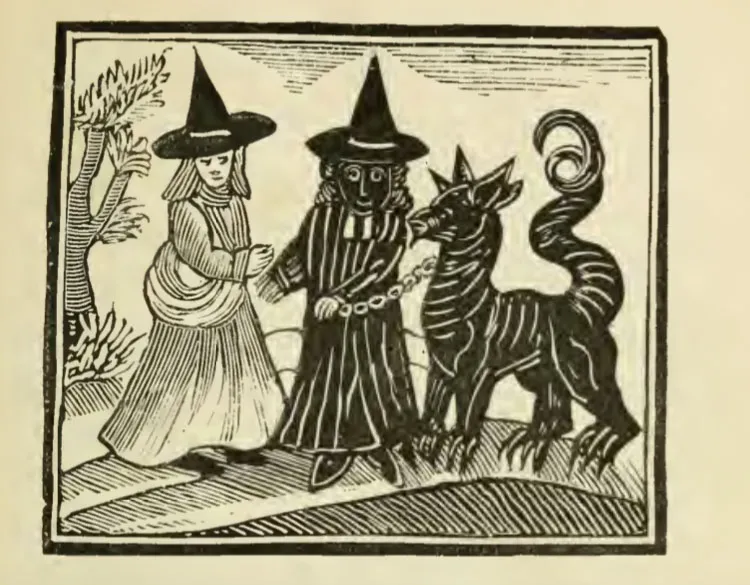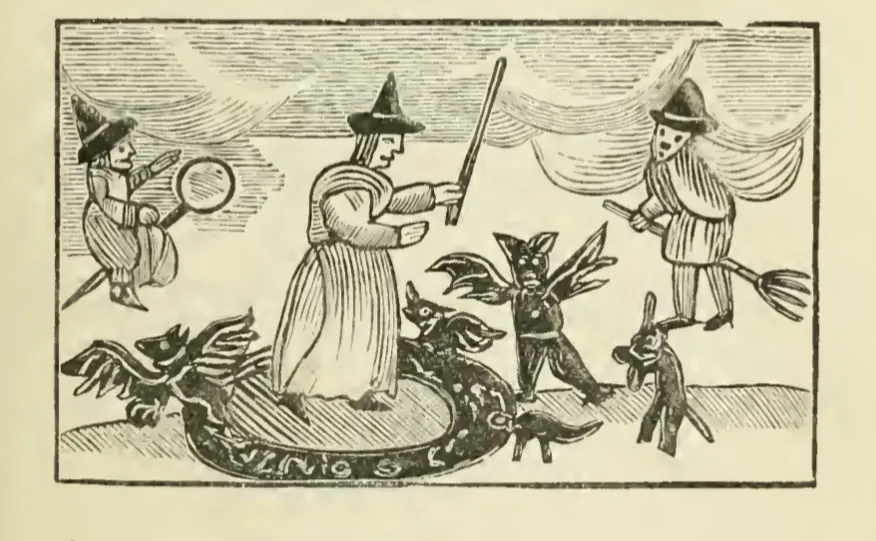How New Printing Technology Gave Witches Their Familiar Silhouette
Popular media helped give witches their image
/https://tf-cmsv2-smithsonianmag-media.s3.amazonaws.com/filer/db/16/db163d2b-c496-4990-bb81-8e5217226989/wellcome.jpg)
You’ll see them tomorrow, and you may have been seeing them for weeks: witches. It’s the month of Halloween, after all, and spooky symbols are everywhere. But you may not know where that witchy silhouette comes from.
The familiar witchy silhouette actually comes from early modern European pamphlets. Without the transformative power of cheap printing that arose in the 16th century, it’s hard to know if the coned hat and broomstick would be the iconic picture of a witch.
Our image of what a witch looks like–the hooked nose, the hat, the black cat, the broom and the cauldron–descends directly from some of these pamphlets, writes Jon Crabb for the Public Domain Review. It's hard to know exactly where the meme of the pointy hat or broomstick originally came from, but once they started being represented in mass-produced pamphlets, they stuck.

The witch-hunting craze itself was sparked by a printed book, Crabb writes. Malleus Maleficarum ("Hammer of the witches") was a manual of witch-hunting authored by two Dominican priests that set the stage for two centuries of witch panic. The book doesn’t really have illustrations–it was more the popular press, which frequently distributed one-page broadsheets or pamphlets as a form of entertainment, that produced the image of the witch. But that image was shaped by the tome. According to Malleus Maleficarum, Crabb writes:
...witches were everywhere. Torture was recommended for extracting confessions, the death penalty was revealed as the only remedy against sorcery, and burning at the stake was proposed as a suitable method of execution. With one fell swoop, the persecution of witches was begun and an entire methodology was established. The book was a bestseller and strongly influenced the obsession with witchcraft for two hundred years, spreading slowly through continental Europe and then the Scandinavian countries, which became particularly obsessed with the subject. In Britain, the witch-craze hit later, but was rewarded with numerous pamphlets and ballads devoted to salacious details of devilish mischief.

In England, writes scholar Carla Suhr, witchcraft pamphlets were written with everyday people in mind, and they had a strong visual element as well as their text, partly because not everybody could read. However, woodcuts took a lot of work to make, which is one of the reasons that witchcraft pamphlets, like other early printed media, included lots of what was basically woodcut clip art. For example, Suhr writes, “a witchcraft pamphlet printed in 1566 contains a crude picture of a salamander or lizard, though the text is talking about a toad.”
This makes the fact that printers of witchcraft pamphlets took the time to produce images specifically of witches equipped with pointy hats, broomsticks and the like all the more striking. At the same time, the woodcuts helped to fix the idea of what a witch looked like in the popular imagination.